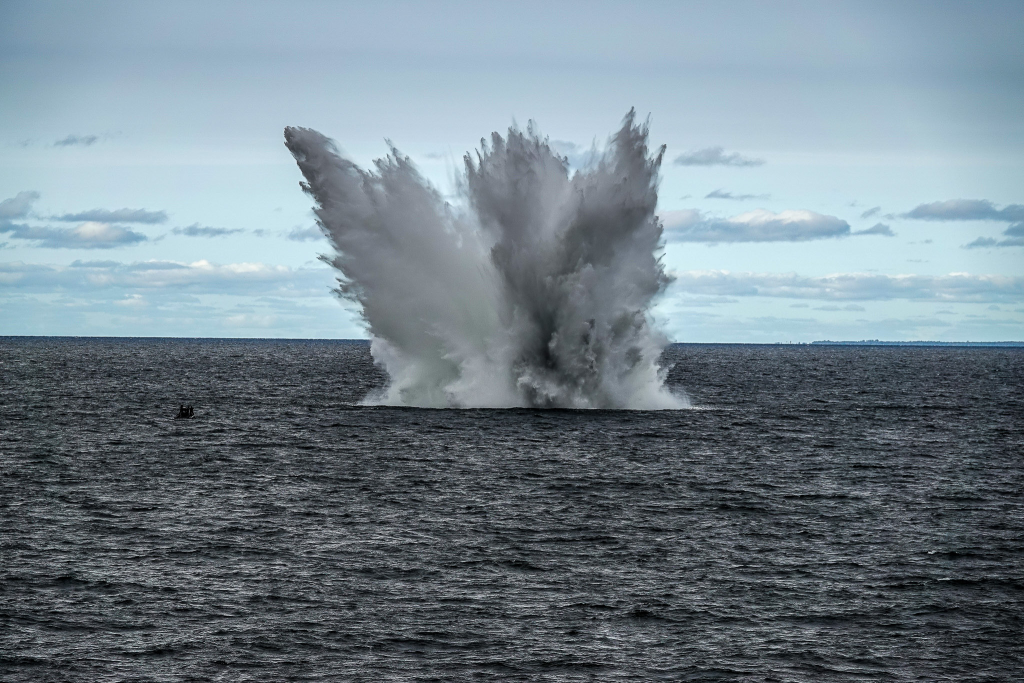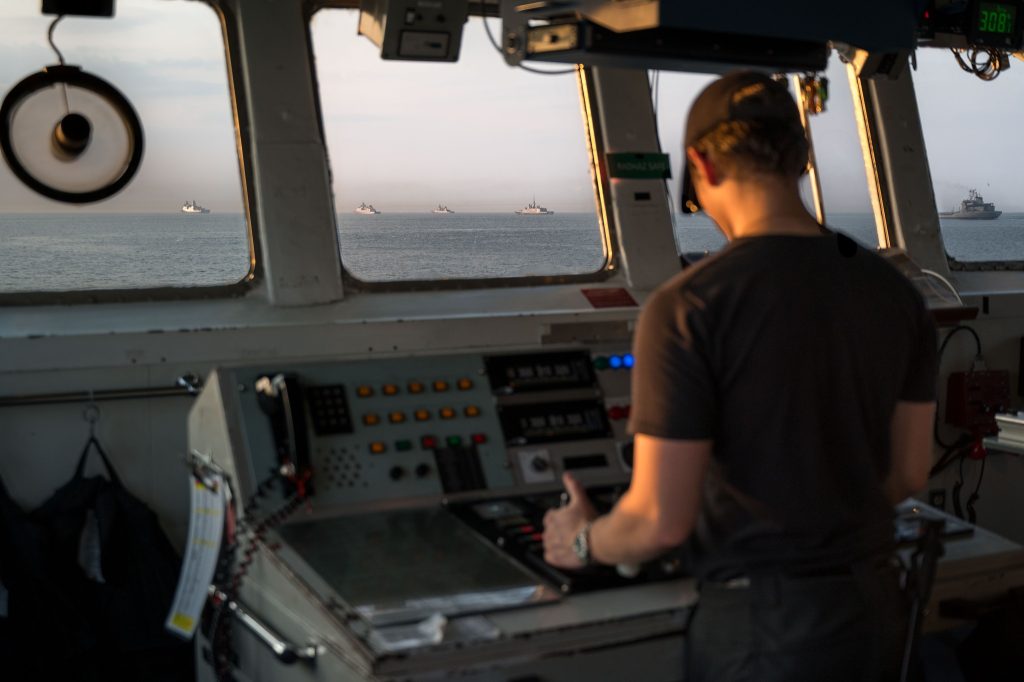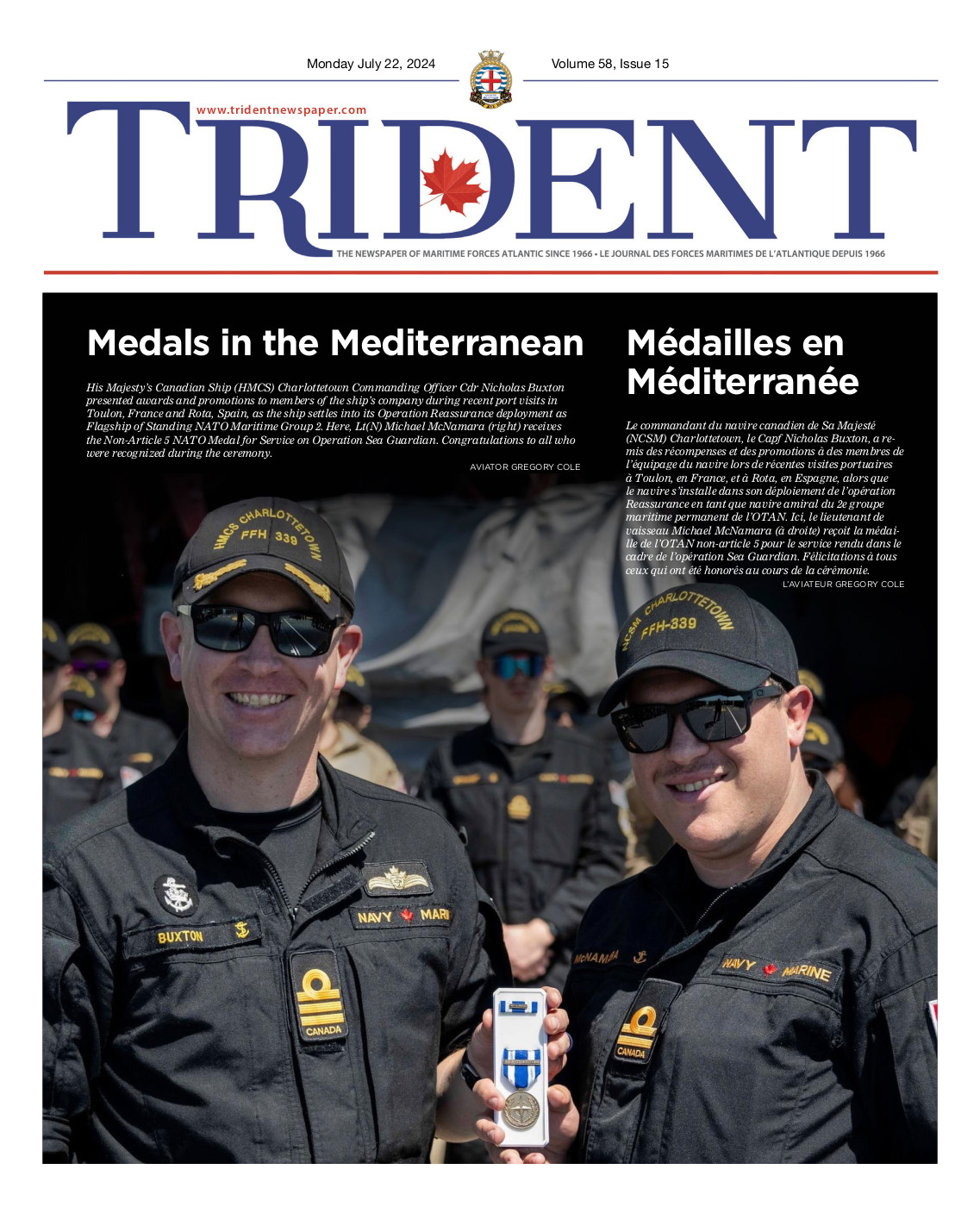
NATO maritime groups conclude German-led exercise Northern Coasts in Baltic Sea
By NATO Allied Maritime Command

Standing NATO Maritime Group 1 (SNMG1) and Standing NATO Mine Countermeasures Group 1 (SNMCMG1) joined more than 3,000 sailors, marines, and aviators for exercise Northern Coasts 2023 held in the central Baltic Sea in the territorial waters of Latvia and Estonia, Sept. 11-22.
The German-led, large-scale maritime exercise is designed to build high-level interoperability and demonstrate the participating nations’ combat readiness and resolve to deter aggression.
Exercise Northern Coasts is an annual exercise that began in 2007. This year, 14 NATO Allies and partner nation Sweden participated in the realistic, live-training exercise that included complex tactical-level challenges within the maritime environment. The force included nearly 30 naval vessels and more than 15 aircraft working together and sharing information and tactics to achieve mission objectives. Canadian involvement included HMCS Summerside and HMCS Shawinigan as part of SNMCMG1.
“With the participation in Northern Coasts, we underlined that SNMG1 is agile and prepared to act as one in order to respond to any posed threat,” said Commander SNMG1, German Navy Rear Admiral Thorsten Marx. “We are always eager to use every opportunity to train with our Allies and Partners. Northern Coasts was part of the robust exercise and training program conducted by my Task Group in order to maintain our high combat readiness. Today, more than ever, it is relevant for the Alliance, to demonstrate the ability and willingness to protect ourselves, patrol the waters, and show solidarity, strength and credible deterrence.”
Participants trained in a broad range of maritime warfighting disciplines across two phases. The first phase included a serialised training program to increase interoperability and warfighting skills. The second phase included tactical-level problems characterized by fast changing situations and a continuous threat, simulated by the exercise control, which was located almost 1,000 km away in Rostock, Germany. For the first time in the history of the exercise also included a scenario that escalated to an Article 5 (collective defence) situation.
SNMCMG1 conducted real-world historical ordnance disposal operations during the exercise. The group located and neutralized more than 10 World War II-era sea mines along the coastlines of the Baltic States, making a significant impact to the safety and security for all mariners.
“I am very pleased that as SNMCMG1, we were able to participate in this exercise,” Commander, SNMCMG1 Polish Navy Commander Piotr Bartosewicz said. “The number of remnants from World War II that were found and neutralized demonstrates that our work is meaningful. Exercises like Northern Coasts provide an ideal opportunity to enhance cooperation between the ships within the group and those contributed to the exercise by individual nations, as well as to train with specialists in our field. I am also delighted by the ongoing development of mine countermeasure capabilities among NATO member states.”
As the exercise unfolded, the collaborative efforts of the participating nations showcased the Alliance’s strong commitment to maritime security. The multinational nature of the exercise not only strengthened interoperability but also fostered mutual trust among NATO members. Operating in the territorial waters of Latvia and Estonia highlighted the importance of securing critical maritime routes in the Baltic region, which are essential for trade and regional stability.
SNMG1 and SNMCMG1 are NATO’s two northern maritime groups and operate under NATO’s Allied Maritime Command (MARCOM). Headquartered in Northwood, United Kingdom, MARCOM is the central command of all NATO maritime forces and the MARCOM commander is the primary maritime adviser to the Alliance. Like its land and air counterparts (LANDCOM and AIRCOM), MARCOM reports directly to NATO’s Allied Command Operations (ACO), which is located in Mons, Belgium.





